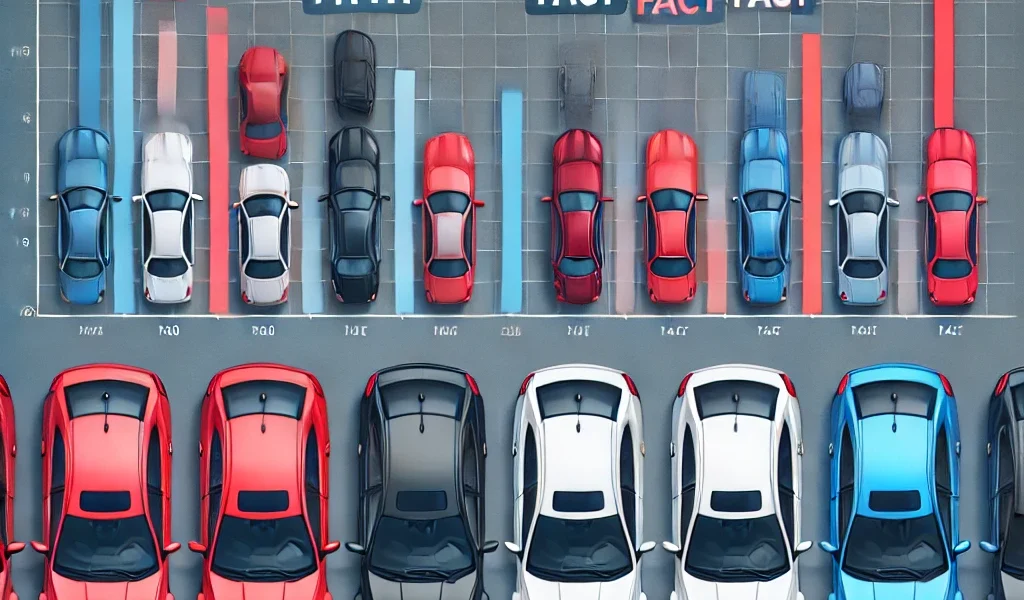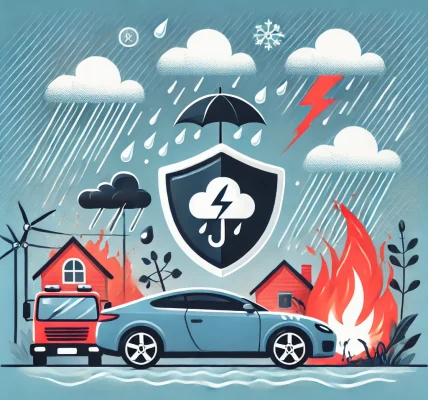Car insurance pricing is influenced by various factors, including your driving history, location, age, and the type of vehicle you drive. However, one common belief is that the color of your car can impact your insurance premiums. Many drivers assume that red cars are more expensive to insure because they are associated with speeding, while white or silver cars may get lower rates due to their visibility and safety.
But is there any truth to these claims? In this article, we’ll explore the myths vs. facts about whether your car’s color affects insurance rates and what really influences the cost of your car insurance.
Common Myths About Car Color and Insurance RatesMyth #1: Red Cars Have Higher Insurance RatesOne of the most persistent myths in the insurance industry is that red cars cost more to insure. The belief stems from the idea that red cars attract more attention, are associated with aggressive driving, and are more likely to get pulled over for speeding.
Reality: Insurance companies do not factor in a car’s color when determining premiums. They primarily look at:
Vehicle make and model
Engine size and performance
Safety features
Claims history of the car model
Cost of repairs and replacement parts
There is no statistical evidence proving that red cars are more accident-prone or receive more traffic violations than other colors.
Myth #2: White and Silver Cars Get Lower Insurance RatesAnother common belief is that white or silver cars are cheaper to insure because they are more visible on the road and are less likely to be involved in accidents.
Reality: While lighter-colored vehicles may be more visible in low-light conditions, insurance companies do not use color as a rating factor when determining premiums. Instead, they focus on factors like the car’s safety rating and how often a specific model gets into accidents.
Myth #3: Black Cars Have Higher Insurance Premiums Due to Theft RiskSome drivers believe that black cars are more likely to be stolen, leading to higher insurance premiums.
Reality: While some car colors are more popular among car thieves, insurance rates are based on theft statistics of specific makes and models, not color alone. If a car model is commonly stolen, it may have higher comprehensive insurance rates regardless of its color.
What Actually Affects Your Car Insurance Rates?1. Make, Model, and Year of the CarInsurance companies consider the brand, model, and production year of your vehicle to estimate repair costs and safety ratings. High-performance cars or luxury vehicles tend to have higher premiums because they are expensive to repair.
- Safety Features and Crash Test RatingsCars equipped with advanced safety features, such as anti-lock brakes, airbags, and lane departure warning systems, often qualify for lower insurance rates because they reduce the risk of severe accidents.
- Driving Record and Claims HistoryYour driving history plays a significant role in determining your insurance premium. Drivers with a history of speeding tickets, accidents, or DUIs typically pay higher premiums.
- Location and Driving HabitsWhere you live and how frequently you drive impact your insurance costs. Urban areas with high traffic congestion and higher accident rates typically have higher premiums compared to rural areas.
- Vehicle UsageInsurance providers consider whether you use your car for personal use, business, or commuting. The more miles you drive, the higher the likelihood of an accident, which may result in higher premiums.
- Credit ScoreIn many regions, insurers use credit-based insurance scores to assess risk. A higher credit score often leads to lower insurance premiums, as it indicates responsible financial behavior.
- Deductible and Coverage TypeYour insurance premium also depends on the type of coverage you choose. Comprehensive and collision coverage offer greater protection but come with higher premiums. Increasing your deductible (the amount you pay out of pocket before insurance kicks in) can lower your premium.
Frequently Asked Questions (FAQs)Q: Why do people think red cars are more expensive to insure?The myth likely comes from the association of red with speed, sports cars, and aggressive driving. However, insurance companies do not consider color when setting rates.
Q: Does a car’s color affect resale value?Yes. Some colors, such as white, silver, and black, are more popular and tend to have higher resale value. Unique colors, such as bright green or yellow, may take longer to sell but do not impact insurance rates.
Q: If I repaint my car a different color, will my insurance cost change?No. Insurance companies do not adjust premiums based on car color. However, you must inform your insurer if the paint job involves modifications that affect the car’s value.
Final Verdict: Does Car Color Matter for Insurance?🚗 Car color does NOT affect insurance rates. While red, black, and white cars have different perceptions in public opinion, insurance companies do not factor in color when calculating premiums. Instead, they focus on vehicle safety, repair costs, driving history, and location.
If you are shopping for a new car and worried about insurance costs, focus on choosing a safe, reliable vehicle with good crash test ratings rather than worrying about its color.
💡 Pro Tip: Always compare insurance quotes from multiple providers to find the best coverage at an affordable rate!
Would you like help comparing insurance providers or finding ways to lower your premium? Let us know in the comments! 🚘💡




